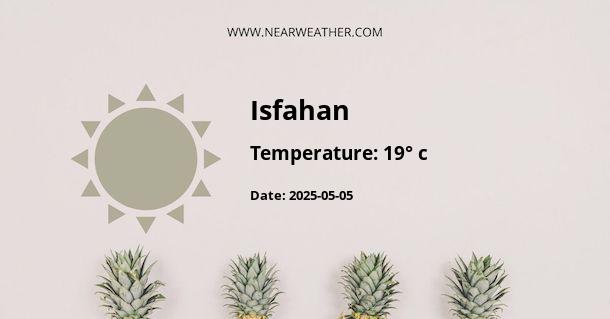Ostān-e Eşfahān, IR: Climate and Weather Year Round
Ostān-e Eşfahān, also known as Isfahan, is a province located in central Iran. It is well-known for its rich history, stunning architecture, and vibrant culture. The province experiences a diverse climate with distinct seasons throughout the year. In this article, we will explore the climate and weather patterns of Ostān-e Eşfahān and provide detailed information about the temperatures, precipitation, and other climatic factors that visitors and residents can expect.
Geographical Factors
Ostān-e Eşfahān is situated in a region characterized by a semi-arid climate, influenced by its proximity to the central Iranian plateau. The province is surrounded by mountains, which play a crucial role in determining its climate. The Zagros Mountains to the west and the Karkas Mountain Range to the east act as barriers, affecting the movement of air masses and precipitation patterns.
Seasonal Overview
Ostān-e Eşfahān experiences four distinct seasons: spring, summer, autumn, and winter. Each season brings its own unique weather conditions and characteristics.
Spring (March to May)
Spring is a beautiful time to visit Ostān-e Eşfahān, as the weather becomes milder and nature comes to life. During this season, temperatures gradually rise, with average highs ranging from 17°C (63°F) in March to 27°C (81°F) in May. It is a relatively dry season, with limited rainfall. However, occasional showers are possible, adding to the beauty of the blossoming landscapes.
Summer (June to August)
Summer in Ostān-e Eşfahān is characterized by hot and dry weather. Average temperatures during this season range from 32°C (90°F) in June to 38°C (100°F) in August. The province experiences low humidity levels, which provide some relief from the heat. However, it is advisable to stay hydrated and seek shade during the peak afternoon hours. The region receives minimal rainfall during summer, contributing to the arid climate.
It's worth noting that the city of Eşfahān, the capital of Ostān-e Eşfahān, is known for its beautiful historical sites such as Naqsh-e Jahan Square and Imam Mosque. It is recommended to visit these attractions early in the morning or late in the afternoon to avoid the intense midday heat.
Autumn (September to November)
Autumn is a pleasant season in Ostān-e Eşfahān, characterized by mild temperatures and a decrease in the heat of summer. Average highs range from 32°C (90°F) in September to 19°C (66°F) in November. The weather becomes more comfortable for outdoor activities, and the landscapes are adorned with vibrant autumn colors. The province experiences little rainfall during autumn, making it an ideal time to explore the region's cultural and natural attractions.
Winter (December to February)
Winter in Ostān-e Eşfahān brings cooler temperatures, especially in the higher elevations. Average highs range from 10°C (50°F) in December to 12°C (54°F) in February. The nights can be quite cold, with temperatures dropping below freezing in some areas. Snowfall is not uncommon, particularly in the mountainous regions, creating picturesque winter scenery. It is advisable to pack warm clothing and be prepared for colder conditions if visiting Ostān-e Eşfahān during winter.
Precipitation
Ostān-e Eşfahān has a relatively low average annual precipitation, influenced by its semi-arid climate. The majority of rainfall occurs during the winter months, with December and January being the wettest months. The province receives an average of 150-200 mm (6-8 inches) of precipitation annually. However, it's important to note that precipitation levels can vary significantly from year to year, and the region occasionally experiences drought conditions.
Winds and Dust Storms
Ostān-e Eşfahān is occasionally affected by strong winds and dust storms, known as "Borān" in Persian. These winds can occur throughout the year but are more common during the spring and summer months. Dust storms can reduce visibility and create hazardous conditions, so it is advisable to stay indoors during these events and follow local weather advisories.
Conclusion
Ostān-e Eşfahān experiences a diverse climate with distinct seasons. Spring and autumn offer mild and pleasant weather, making them ideal times to explore the region. Summer brings hot and dry conditions, while winter brings cooler temperatures and occasional snowfall. Visitors to Ostān-e Eşfahān should plan their activities and pack accordingly to make the most of the different weather conditions throughout the year.
A - Isfahan's Latitude is 33.000000 & Longitude is 52.166672.
A - Weather in Isfahan is -3° today.
A - Climate Conditions in Isfahan shows clear sky today.
A - Humidity in Isfahan is 16% today.
A - Wind speed in Isfahan is 3.24 km/h, flowing at 242° wind direction. today.
